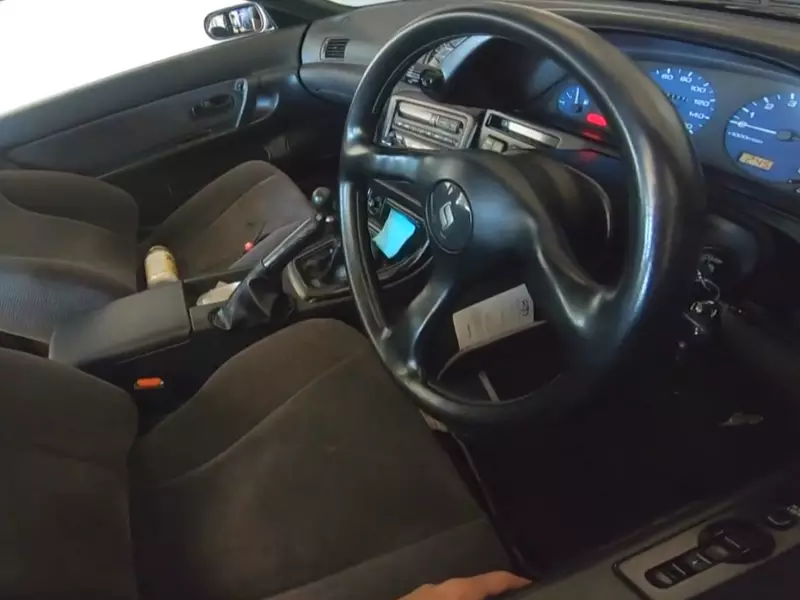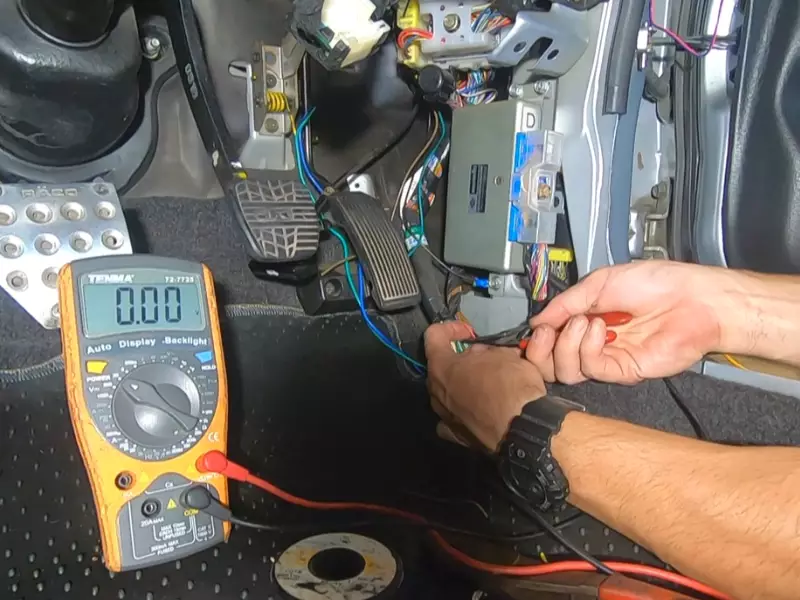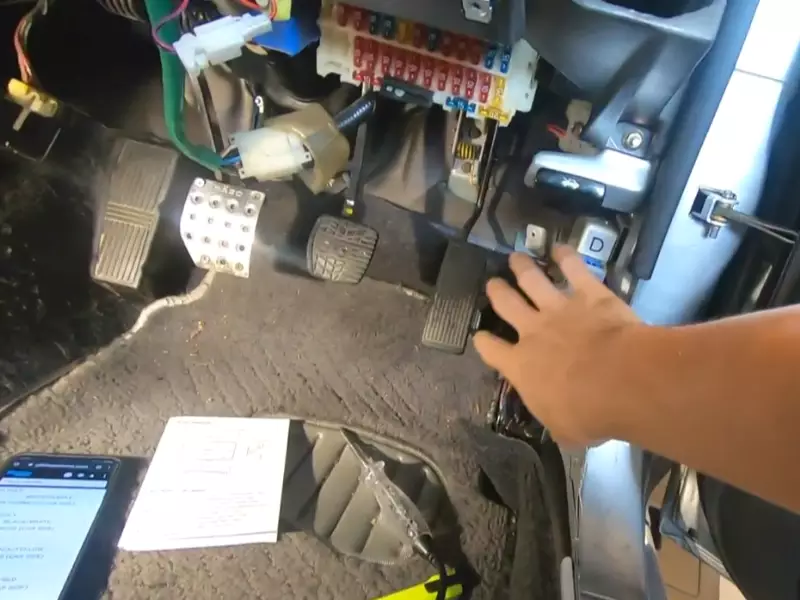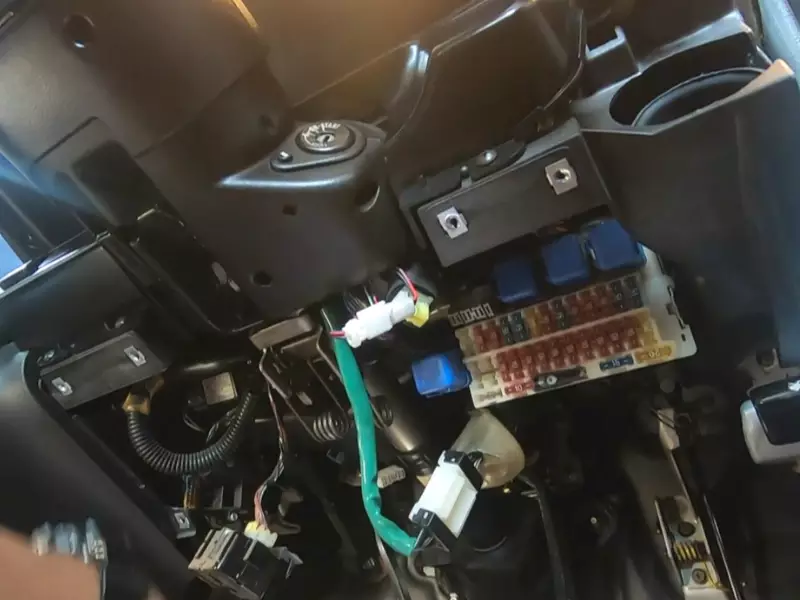To install a car alarm, start by reading the installation instructions provided with the alarm system. These instructions will guide you through the process of connecting the alarm system to the appropriate wires and components in your vehicle.
It is important to carefully follow the instructions to ensure proper installation and functionality of the car alarm.
Choosing The Right Car Alarm System
When it comes to safeguarding your vehicle, installing a car alarm system is crucial. With the wide range of options available in the market, it’s essential to choose the right one that suits your needs and provides optimal security. In this section, we will delve into the various factors to consider when selecting a car alarm system, popular brands, and their features.
Researching different types of car alarm systems
Before making a decision, it’s important to thoroughly research and understand the different types of car alarm systems available. By doing so, you can determine which one best fits your vehicle and security requirements.
Here are a few types of car alarm systems to consider:
- Active Alarms: These alarms are manually activated by the driver and require a direct action to trigger.
- Passive Alarms: These alarms automatically arm themselves when the vehicle is turned off and the doors are closed.
- Two-Way Alarms: These alarms provide real-time feedback to the owner, notifying them if the alarm has been triggered.
- GPS Tracking Alarms: These advanced alarms not only sound an alert but also allow you to track your vehicle’s location using GPS technology.

Factors to consider when selecting a car alarm system
Choosing the right car alarm system can be a daunting task, but considering certain factors can help simplify the process. Here are a few things to keep in mind:
- The level of protection required: Assess the security needs of your vehicle and determine the level of protection you require. This could include features such as shock sensors, sirens, immobilizers, or remote control functionality.
- Budget: Determine your budget for the car alarm system. Prices can vary significantly, so it’s important to find a balance between affordability and quality.
- Installation process: Consider whether you want to install the system yourself or have it professionally installed. Some systems may require advanced knowledge and tools, while others can be easily installed by the vehicle owner.
- User-friendliness: Ensure that the car alarm system you choose is easy to understand and operate. A complicated system may lead to confusion or accidental activations.
- Additional features: Look for additional features that may enhance the security of your vehicle, such as keyless entry, remote start, or smartphone connectivity.
Popular car alarm brands and their features
Now that you have a better understanding of the factors to consider, let’s explore some popular car alarm brands and the features they offer:
| Brand | Key Features |
|---|---|
| 1. Viper | Two-way communication, smartphone compatibility, GPS tracking, shock sensors |
| 2. Python | Remote start, keyless entry, shock sensors, panic mode |
| 3. Clifford | Smartphone control, tilt sensors, GPS tracking, remote engine start |
| 4. Avital | Keyless entry, panic mode, remote start, shock sensors |
These are just a few examples of popular car alarm brands, each with its own unique set of features. When choosing a brand, consider the specific features that align with your security needs and preferences.
By conducting thorough research, considering important factors, and exploring popular brands, you can confidently select the right car alarm system for your vehicle. Prioritizing your vehicle’s security not only provides peace of mind but also ensures its protection against theft or unauthorized access.
Gathering The Necessary Tools And Equipment
Before you dive into the process of installing a car alarm, it is essential to gather the right set of tools and equipment. Having the necessary tools not only ensures a smooth installation process but also saves you from the frustration of running back and forth to the store. In this section, we will discuss the essential tools needed for car alarm installation, any additional equipment that may be required, and where you can purchase them.
Essential Tools Needed for Car Alarm Installation
Installing a car alarm requires a specific set of tools to ensure a successful installation. Here are the essential tools you will need:
- A set of screwdrivers – You will need both flathead and Phillips screwdrivers to remove any screws and panels.
- Wire strippers – These tools come in handy when you need to strip the insulation off the wires for proper connection.
- Multimeter – A multimeter is used to test electrical voltage, continuity, and resistance, helping you troubleshoot any wiring issues.
- Electrical tape – Electrical tape is crucial for securing and insulating the wires to prevent any short circuits.
- Crimping tool – This tool is used to crimp connectors onto the wires, ensuring a secure and reliable connection.

Additional Equipment that May Be Required
In addition to the essential tools, there are a few additional equipment that may be required depending on your car’s make and model, as well as the type of car alarm you choose to install. These include:
- Trim removal tools – If your car has any panels or trims that need to be removed for installation, having trim removal tools will make the process easier and prevent any damage to the interior.
- T-taps or Scotch locks – These connectors allow you to tap into existing wires without needing to cut and strip them, making the installation less invasive.
- Extra wiring – Depending on the complexity of your car alarm system, you may need additional wiring to connect different components.
- Mounting brackets – Some car alarm modules may require mounting brackets to securely attach them to your vehicle.
Where to Purchase the Tools and Equipment
When it comes to purchasing the required tools and equipment for car alarm installation, there are several options available:
- Local automotive stores – Visit your nearest automotive store or hardware store to check if they have the necessary tools in stock.
- Online retailers – Online platforms such as Amazon, eBay, and automotive specialty websites offer a wide range of tools and equipment for car alarm installation.
- Specialized car alarm stores – Some stores specialize in selling car alarm systems and the tools required for their installation. Check if there are any such stores in your area.
By gathering the essential tools and necessary equipment beforehand, you can ensure a hassle-free installation process for your car alarm system. In the next section, we will delve into the step-by-step process of installing a car alarm.
Preparing The Vehicle For Installation
Before installing a car alarm, it is crucial to properly prepare the vehicle to ensure a successful and hassle-free installation process. This involves disconnecting the vehicle’s battery, locating the appropriate wires in the car, and checking for compatibility with the car’s electrical system.
Disconnecting the vehicle’s battery
When it comes to installing a car alarm, safety should always be the top priority. Before starting any work, it is essential to disconnect the vehicle’s battery to prevent any electrical mishaps. By disconnecting the battery, you minimize the risk of short circuits and electrical shocks.
Locating the appropriate wires in the car
Next, you need to locate the appropriate wires in the car to connect the car alarm system. This step requires careful attention and precision. It is advisable to refer to the vehicle’s wiring diagram, which can usually be found in the owner’s manual or obtained from the manufacturer.
Once you have the wiring diagram, identify the wires that are relevant to the car alarm installation. Typically, these will include the power, ground, ignition, and accessory wires. Ensure that you properly identify and label each wire to avoid confusion during the installation process.
Checking for compatibility with the car’s electrical system
Compatibility is a crucial factor when it comes to installing a car alarm. Before purchasing a car alarm system, ensure that it is compatible with your vehicle’s electrical system. A compatible system will integrate seamlessly with the existing wiring and electronics of your car, minimizing the risk of compatibility issues and malfunctions.
To verify compatibility, consult the product specifications of the car alarm system and compare it to your vehicle’s electrical system. Pay attention to factors such as voltage requirements, wire connections, and any additional features or functionalities that may require compatibility checks.
Moreover, it is always recommended to consult with a professional car alarm installer or refer to the car alarm manufacturer for any specific compatibility concerns or questions you may have. Their expertise will help you determine the best alarm system for your vehicle.

Installing The Car Alarm System
When it comes to enhancing the security of your vehicle, installing a car alarm system is a wise choice. A car alarm is a deterrent that can help protect your precious vehicle from potential theft and vandalism. By installing a car alarm system, you can have peace of mind knowing that your vehicle is equipped with advanced security measures. In this blog post, we will guide you step by step through the process of installing a car alarm system, ensuring that your vehicle remains safe and secure at all times.
Mounting the main control unit in a secure location
Mounting the main control unit is the first step in installing your car alarm system. The main control unit acts as the brain of the system, coordinating and monitoring all the security features. It is crucial to mount the control unit in a secure location that is not easily accessible to potential intruders. Ideally, choose a hidden spot within the vehicle where it won’t attract attention.
- Consult the user manual to identify suitable locations for mounting the control unit.
- Ensure that the location you choose allows for easy access to the wiring connections.
- Securely mount the control unit using screws or adhesive tape, depending on the manufacturer’s instructions.
Connecting the control unit to the car’s electrical system
After mounting the control unit, the next step is connecting it to your car’s electrical system. This enables the alarm system to receive power and communicate with the various components of your vehicle’s security system. Follow these steps to ensure a proper connection:
- Locate the wiring harness that came with your car alarm system.
- Identify the appropriate wires for power, ground, and ignition.
- Strip the ends of the wires and connect them to the corresponding wires in your vehicle’s electrical system.
- Use electrical tape or wire connectors to secure the connections and prevent any loose wiring.
Wiring the sensors and sirens for optimal effectiveness
The sensors and sirens of a car alarm system are the key components that detect any suspicious activity and sound the alarm. Properly wiring these components is vital to ensure the optimal effectiveness of your car alarm system. Follow these guidelines for a successful installation:
- Identify the sensors and sirens that came with your car alarm system.
- Select appropriate locations for mounting the sensors, such as the doors, windows, or trunk.
- Strip the ends of the wires connected to the sensors and sirens.
- Connect the wires to the corresponding terminals on the control unit, ensuring a secure connection.
- Test the sensors and sirens to confirm their functionality before finishing the installation.
By following these step-by-step instructions, you can successfully install a car alarm system to enhance the security of your vehicle. Remember to consult the user manual specific to your car alarm system for detailed instructions and any additional information. With your car now equipped with an alarm system, you can enjoy peace of mind knowing that your vehicle is better protected against potential theft or vandalism.
Testing And Troubleshooting
Once you have successfully installed a car alarm system, it is essential to perform extensive testing to ensure its functionality and troubleshoot any potential issues that may arise. Testing and troubleshooting are crucial steps to ensure that your car alarm system works effectively in protecting your vehicle.

Verifying the functionality of the car alarm system
After the installation is complete, you should first verify that the car alarm system is functioning correctly. This step involves testing each component of the system to ensure proper operation. Here are some essential elements to check:
- Siren: Activate the car alarm and listen for the siren to ensure it is loud and clear. A piercing alarm sound will act as a deterrent to potential thieves.
- Remote control: Test the remote control’s range and responsiveness by arming and disarming the car alarm system from various distances around your vehicle.
- Door/hood/trunk sensors: Open and close each door, the hood, and the trunk to see if the alarm triggers accordingly. Ensure that all sensors are properly aligned and functioning correctly.
- Shock sensor: Test the shock sensor’s sensitivity by gently tapping the windows and bumping the vehicle. The alarm should activate if any significant impact is detected.
Troubleshooting common issues during installation
During the installation process, you may encounter common issues that can affect the proper functioning of the car alarm system. Here are some troubleshooting tips to address these problems:
- Poor connections: Check all wiring connections to ensure they are secure and properly connected. Loose or inadequate connections can cause malfunctions in the alarm system.
- Fuse issues: Verify that all the fuses used in the installation are the correct type and rating. This step will help prevent blown fuses and potential damage to the car alarm system.
- Compatibility: Ensure that the car alarm system is compatible with your vehicle’s make and model. If compatibility issues are present, consult the manufacturer or seek professional assistance.
- Programming errors: Double-check the programming steps outlined in the installation manual to ensure all settings are correctly configured. Incorrect programming may prevent the car alarm system from operating as intended.
Ensuring proper integration with the vehicle’s existing security features
Integrating the car alarm system with your vehicle’s existing security features is essential for comprehensive protection. Proper integration will ensure that both systems work seamlessly together. Consider the following steps:
- Research: Familiarize yourself with your vehicle’s existing security features, such as the factory alarm system or immobilizer.
- Consultation: Seek advice from professionals or refer to the car alarm system’s manual to determine the best integration approach.
- System configuration: Adjust the car alarm system’s settings to complement the existing security features. This step will prevent conflicts and optimize the overall security of your vehicle.
By thoroughly testing the functionality, troubleshooting potential issues, and ensuring proper integration with your vehicle’s existing security features, you can confidently rely on your car alarm system to protect your vehicle from theft or unauthorized access.
Frequently Asked Questions For How To Install A Car Alarm
Can I Install Car Alarm Myself?
Yes, you can install a car alarm yourself. It is possible to do the installation independently.
How Do You Install A Car Theft Alarm?
To install a car theft alarm, follow these steps:
- Choose a compatible alarm system for your car model.
- Read the installation manual thoroughly.
- Gather the necessary tools and supplies.
- Locate the appropriate connections, such as power and ground.
- Connect the alarm components according to the manual.
- Test the alarm to ensure it’s functioning correctly.
Can You Install An Aftermarket Car Alarm?
Yes, you can install an aftermarket car alarm to enhance your vehicle’s security and protection. It is a viable option for added peace of mind and can be easily installed by a professional car alarm technician. Ensure compatibility with your vehicle and consider the features that meet your specific needs.
Where Do You Connect A Car Alarm?
Connect a car alarm to the vehicle’s wiring system.
Conclusion
Installing a car alarm is an essential step to safeguard your vehicle from theft and ensure peace of mind. By following the step-by-step guide provided in this blog post, you can easily set up a car alarm system on your own.
Remember to choose a reliable and high-quality alarm system that suits your needs. With the right tools and a little patience, your vehicle can become well-protected against potential intruders. So, what are you waiting for? Get started on securing your car today!
